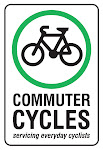On the Roads, or How Andrew and Ali hauled 100kg for 100 km with ease then were later nearly defeated in 30kmIt is a combination of factors that make a road, mostly in retrospect, a good choice. For anyone who knows cycle touring well, this may be old hat, but the condition of the roads and more importantly their verges does take up much of our daily musings. As this is not our home turf, we try to decide before we set out (and often on the way) based on our best guesses as to traffic quality and quantity, directness of route to destination and likelihood of hills.
Our first day of this section followed a rest day, so we decided to push it and our laden bikes a bit. The maps and directions we had been working from suggested two mountain passes early in the morning. I set out with much trepidation, only to discover that we had ended up on the new No. 3, not the old No.3 (not hard if you can’t read street signs in Hangul). So, rather than go over the mountains, we went through them.
Tunnels do feel like cheating. And with their narrower verges and acoustic qualities that made the smallest Kia sound like a 747, they were a little scary. Though when we hit one towards the end of this 105km day, I cheered. No more hill climbs today! Our day on the freeways made me appreciate a generally flatter and smoother surface and a wide verge (though they are often covered with sand and rubble). Good for making distance, but not so good for scenery or for my teeth, which acted as a filter for dust and exhaust fumes all day (I should be wearing a face mask like all those sensible Koreans).
Our second day followed medium-sized roads, where the generous South Korean trucks toot gently to let us know of their approach and then take a wide berth around us. An excellent option is to follow an old highway which has been superseded by a freeway: good road condition, much quieter and usually more scenic. As we headed for our first night of Korean camping in the remote but scenic Juwangsan National Park, the traffic thinned as the tour buses full of

weekend hikers headed back to town. En route, a friendly kyphosed roadside apple vendor (see pic) nestled amongst a sea of bare apple trees awaiting spring, sold us some sustaining apples. We weren't sure of her source given the season, but we didn't question her, mostly due to the gross language barrier...we just enjoyed our apples.
We set up in a camp ground so orderly and refined that the toilet blocks had sensor lights and played classical music when you entered. As the sun sank behind the towering rocky outcrops, we cooked up our own feast, Korean style (see Cooking with Gas (Canisters) Episode 1).

Waking to a sunny day and a bowl of rice porridge, we felt refreshed and optimistic. Our route from here followed minor roads, which tend to me most quiet and scenic. They are also least likely to have a verge, and most likely to go over mountains rather than through them. All of these factors were contained in this particular route, with the added bonus of a constant headwind. We struggled along the edge of a valley, a very effective natural wind tunnel, for 30km. This culminated in a winding hill climb which was marked by signs mockingly showing us the gradient. The steep descent on the far side was a minor consolation, as we found the nearest possible motel to recover for the night. Rest day, here we come!
Let it be said that a good road surface makes Andrew happy. I prefer a favourable gradient, which does make me wonder why again we have chosen a country that straddles mountain ranges. As with our previous trip to East Timor, we have been the unintended beneficiaries of the due attention that is paid to road-building in militaristic countries (it helps for the hardware). South Korea, with the aid of its economic boom, has provided quite an array of road choices that gives the cyclist endless choice, in true capitalist style.

Cycling Summary
Day 12: Suanbo to Andong – 106km
Highways. Tunnels. Tail Winds.
Day 13: Andong to Juwangsan National Park – 56km
Provincial roads. Few climbs as we hit some of the western mountain ranges
Day 14: Juwangsan National Park to Cheongha – 55km
Tough head winds. 3 switchbacking 500-600m peaks. Multiple minor climbs.




















